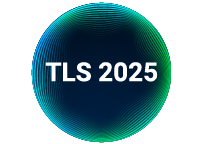A meeting of minds
AusIMM’s annual Thought Leadership Series brings together mining industry leaders to discuss current and emerging trends in the sector.
This story was originally published on Australian Mining.
There’s no question the mining industry has a key role to play as the hunger for critical minerals grows.
Production of minerals like copper, lithium, alumina, and those that fall under the rare earths umbrella need to ramp up to unprecedented levels if demand is to be met in time for impending net-zero targets.
But the resources sector is in the midst of a reckoning as to how those resources will be extracted.
Now in its seventh year, the AusIMM Thought Leadership Series (TLS) offers a unique platform to bring together mining executives, financiers, governments and resource professionals.
The aim is to explore global issues surrounding the mining industry, exchange ideas and foster the kind of thought-leadership that drives innovation and transformation.
The 2024 TLS theme ‘responsible mining in a digital era’ aims to build on last year’s conversations that reviewed the shifting paradigm of sustainable mining.
In the second session of the series titled ‘Investing in a sustainable future’, a panel with more than 100 years combined industry experience explored the challenges and opportunities in solving energy transition and environmental, social and governance (ESG) issues across the mining value chain.
This session’s panellists included VHM chief executive officer Ron Douglas, Jervois Global chief financial officer and executive general manager James May, Environmental Resources Management critical minerals global director Toby Whincup, and Acorn Capital senior analyst Karina Bader.
A key focus of the evening was the ramp-up in production needed to achieve a sustainable future, with special focus on the challenge of attracting investment to new and emerging projects.
Whincup emphasised the complexity of the sustained growth needed from the Australian mining industry.
“We’ve got to double-to-quadruple the amount of critical minerals extracted and processed today within the next 15 years,” Whincup told the audience.
“Tier 1 assets are getting harder to find and we’re spending less on greenfield exploration – a market that is dominated by juniors who are often underfunded and under-resourced.
“Building momentum and capacity around asset discovery is getting harder.”
Once an asset is found and funded, Whincup said it takes 17 years on average to reach operation. Then there are geopolitical considerations associated with mineral processing chains.
But it’s not all doom and gloom for the sector. Far from it.
“The opportunity is there,” Whincup said. “We should be able to overcome the challenges.
“We’re world leaders in exploration and mining, nobody can argue with that. We just need to get the strategy right around where the value-add goes.”
Panellist Ron Douglas is driving VHM’s Goschen rare earth and mineral sands project in Victoria, which is currently in its own approvals process.
The final step in the public review stage wrapped up in June when the Victorian Government-appointed Inquiry and Advisory Committee (IAC) issued its recommendations report on the project’s environment effects statement (EES) to the Minister for Planning.
The Minister will make an assessment of the environmental effects of the project after considering the IAC’s report, as well as the EES public submissions, and any other relevant matters.
A positive ministerial assessment for the Goschen EES will trigger the Earth Resources Regulator assessment of VHM’s mining licence application and be the green light for VHM to apply for its relevant permits.
Douglas told Australian Mining events like the TLS are critical in bringing the resources sector together to tackle challenges like regulations collaboratively.
“Challenges shared by the panellists resonated with the audience because they are experiences in common,” Douglas said. “This was the resounding takeaway for me and highlights that we can work together to address these shared challenges.”
Goschen was recently announced as one of the lowest capital cost projects among Australia’s near-term rare earths mine development opportunities.
“While this is one of the most challenging markets to construct and operate in recent years, the reduction of our capital costs ensures that this project is competitive and at the bottom of the cost curve,” Douglas said.
According to Douglas, the diversity in the panel perspectives offered a broad insight into the complexity of the project investment landscape for critical mineral assets and exploration in Australia.
“Rhetoric around Australia’s inherent need to grow its domestic downstream capabilities in industries linked to renewable technologies and global net-zero aspirations has been amplified by media attention,” he said.
“This TLS event was timed perfectly to discuss the role of critical mineral mine and processing developers, project funding strategies and government support on the road to net-zero.”
Southern Cross Gold (SXG) is another junior making a name for itself in Victoria. General manager Lisa Gibbons was in the audience and found SXG’s experience reflected in the panel’s discussion.
“As someone involved in a junior company that has a significant gold and antimony critical mineral exploration and development project, I feel the panel precisely understood and expressed the current difficulties and future opportunities in developing critical mineral projects in Australia,” Gibbons told Australian Mining.
“They highlighted that most critical mineral exploration is carried out by junior companies and despite the world’s scramble to secure critical minerals, junior mining companies struggle to raise equity to continue exploration, and to raise finance to bring projects into production. This is due to the loss of global institutional investment over the last 10 years.
“There are of course many facets as to why this is, such as small markets and opaque commodity prices for some critical metals, global challenges with permitting, lack of trust from stakeholders about our industry, and that the new critical mineral incentives from the government don’t fill the gap in securing equity that the junior companies are searching for... to read the full story, please visit: A meeting of minds - Australian Mining
